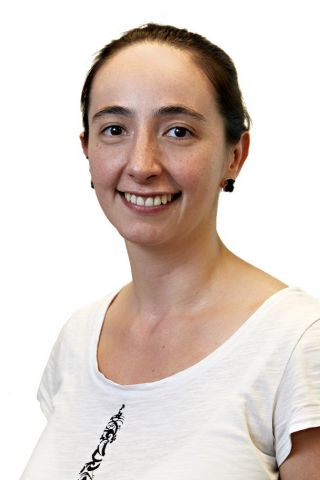Unlocking the Secrets of Skeletal Muscle Cells

Moving from Colombia eight years ago to study a Bachelor of Science at the University of Melbourne, Laura Galvis Vargas is a seasoned Melbournite. As a member of the Marcelle Group, Laura is undertaking her PhD in muscle regeneration research, and she is already renowned amongst ARMI for her passion for science and collaboration (facilitated by the ABC symposium).
As a UROP (Undergraduate Research Opportunities Program) student, Laura commenced her research career at the Walter and Eliza Hall Institute in the field of lung epigenetics. Under the supervision of Dr. Marie-Liesse Asselin-Labat, she completed her honours and worked as a research assistant, developing her skills as a scientist.
Having joined ARMI just over three years ago, Laura is now in the final year of her PhD and is facing an exciting (but daunting) time with her thesis submission date fast approaching.
When asked about her research, Laura was excited but also apprehensive. “I can tell you we’re undertaking two projects at the moment – but one’s a secret!” smiled Laura. Currently investigating muscular dystrophy (a disease resulting in weakness and loss of muscle mass), Laura has been a part of some exciting leaps in research. But we’re not allowed to know about all of them – yet.
The Marcelle Group, headed by Professor Christophe Marcelle, has two major tasks ahead of them. Firstly, to characterise the signalling pathways (communication between cells) which regulate the initiation of muscle cell formation. And secondly, to identify the gene networks that lead to the formation of multinucleated muscle fibres.
Traditionally the Marcelle Group has focused on early somitogenesis and muscle fusion, focusing on how functional skeletal muscle arise from a group of unspecialised mesodermal cells. This is achieved through studying the cellular and molecular mechanisms regulating cell specialisation using high-end in vivo electroporation. This powerful tool allows researchers to apply an electrical field to cells, increasing their membrane permeability, thereby allowing drugs and/or DNA to be introduced into the cell. For Laura, her PhD has a special focus on understanding the role of the protein/ gene FGFR4 has in muscle regeneration and cross-talk between fat and muscle.
Despite the inherent complexities of scientific research, Laura has been impressed with ARMI’s wealth of resources, in both minds and infrastructure. “There are great resources here,” exclaimed Laura, “The facilities are great, and it makes the process of research so much easier”.
Aside from working in the laboratory, Laura enjoys working on the collaborative side of science, having presented at the ABC Symposium at ARMI last October. She also holds big dreams, with aspirations of one day contributing to the development of a therapeutic treatment for muscular dystrophy.
Regardless of the demanding nature of conducting a PhD, it’s not always all work and no play. Since moving to Australia, Laura’s made Melbourne her home, enjoying the city to its full potential. “I love the Melbourne brunch culture,” smiled Laura, “I also make time for salsa dancing”. With submission nearing, we look forward to seeing what she decides to do next.
For more information on Laura Galvis Vargas and the Marcelle Group at ARMI, please visit the Marcelle Group page. You can contact Laura via laura.galvis@monash.edu or follow her on Twitter @silal141.
